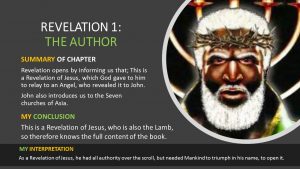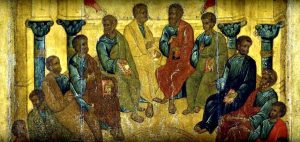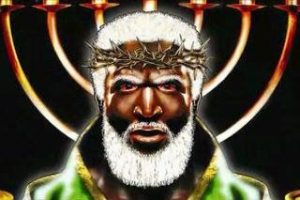Ancient Image of Christ & Disciples
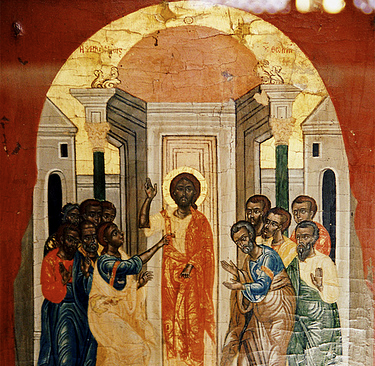
“It is evident that Christ had in his veins the blood of all mankind and belonged to no particular race. Christ was god in the perfect sense of his mind and soul. His spirit was truly God’s spirit”.
Quote by: The Rt. Hon. Marcus Moziah Garvey
One of the Oldest images of Yahshuah
Above is one of the earliest images of Yahshuah and his disciple 3rd century AD, now displayed in the Coptic Museum, Cairo, Egypt. As it is seen here Christ and all t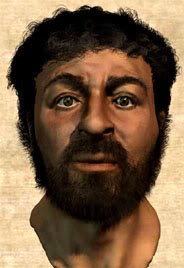 he disciples present, are featured as being dark skinned people. Images of Yahshuah, as a dark skinned man was common in the ancient world, just like how the white images of Jesus Christ today are common in our modern age. We are often told that the colour of Christ is irrelevant. However if this was the case, then why did people stop depicting as black and start presenting him as white or with a lighter hues. Obviously it must have been and still must be relevant, to those who thought to changed it and continue to maintain it. If his colour is irrelevant then it should not be a problem if people begin again to start to depict him black or with a darker hue.
he disciples present, are featured as being dark skinned people. Images of Yahshuah, as a dark skinned man was common in the ancient world, just like how the white images of Jesus Christ today are common in our modern age. We are often told that the colour of Christ is irrelevant. However if this was the case, then why did people stop depicting as black and start presenting him as white or with a lighter hues. Obviously it must have been and still must be relevant, to those who thought to changed it and continue to maintain it. If his colour is irrelevant then it should not be a problem if people begin again to start to depict him black or with a darker hue.
This image to the right displayed here entitled “The Real face of Jesus” is a modern scientific artistic impression of Jesus, based upon alleged historical descriptions and the racial features of the Jews of Judea at the time. As can be seen, hair is short and he wouldn’t I think be considered a handsome, as he is customary depicted.
Although this modern artist impression is possibly a lot closer to the truth then the common, white, longed haired good looking Jesus. However it may fit the face of a man named Jesus a bit better, but possibly not as well Yahshuah, or even the true Christ, whether called, Jesus, Yeshua, Yoshuah or any other name, based upon the oldest images we have of him.
Here is another one of the oldest pictures of Christ and his Disciples that we have.

This one was found and remains in Rome, again they are featured dark skinned, here Christ even has an afro, very telling. This together with the one above, now in the Coptic Museum actually represent, two of the oldest images of Yahshuah Karast Mesu, known in the world today.
